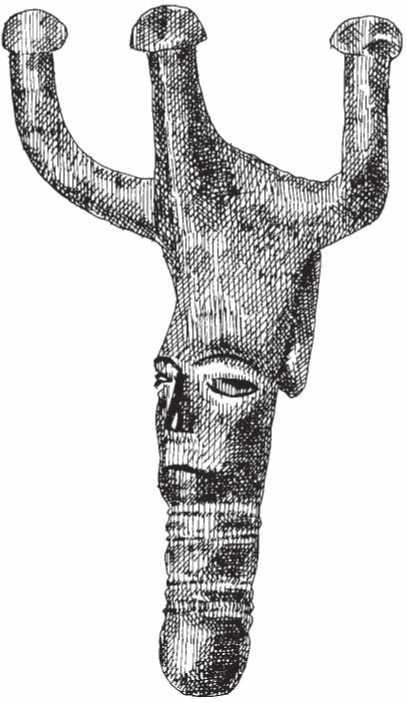It is an interesting paradox that, to an extent, the more 'civilized' a society becomes the worse is its attitude to animals. In its strictest sense, civilization means 'city-living' and it is true that the further removed one is from the natural world, the smaller may be one's sensitivity to it. Thus Keith Thomas, speaking of early modern England, comments that 'human civilization indeed was virtually synonymous with the conquest of nature'.1 Many of the Greek and Roman philosophers, products of advanced ancient civilizations based upon the polis and the urbs, preached that man was the measure of all things, and thus that animals and all of nature were subordinate to humankind.2 This attitude to creatures that are not human can be linked, in very general terms, to the treatment of some humans - women, groups of different ethnic origins and different classes, especially slaves - as inferior. This was certainly the case in the classical world and, indeed, in early modern England where, in the eighteenth century, racialists remarked that the orangutan was closer to the negro than the negro to the white man.3
The notion that humans had a God-given right to treat the natural world and its animals as their possessions to do with as they pleased has, of course, a very ancient and biblical pedigree. In his creation of the world in the Book of Genesis, God gave the first humans dominion over all the beasts of the earth, the birds of the air and the creatures of the waters.4 Moreover, it is not without significance that it was an animal - a serpent - which was directly responsible for Adam and Eve's fall from grace and their banishment from the Garden of Eden. After the Flood, God renewed the supremacy and authority of humankind over the animal world.5
Keith Thomas's scholarly exploration of the attitude of humans to animals and the environment in the early modern period of England (1500-1800)6 provides a fascinating insight into the reasoning behind the unquestioning view, which is still held (in more or less modified form) in most societies all over the world, that animals existed solely in order to be exploited for the benefit of humans, at whatever cost to the

Figure 9.1 Triple-horned bronze human head, first century AD, Hafenturm, Germany. Paul Jenkins.
Creatures themselves and for however trivial a cause. Between the sixteenth and eighteenth centuries, animals in Britain were considered as the absolute property of people to use as they wished: no moral issues were considered relevant, and the killing of animals for pleasure was regarded as totally acceptable. It was noted by English observers in the seventeenth century that this attitude contrasted sharply with the much more balanced treatment of beasts by some North American Indian tribes, for whom there was a 'tacit contract' between humans and animals, even though beasts were traditionally hunted for food and skins.7 To Europeans at this time, there was a yawning and unbridgeable gulf between animals and humans. But during the sixteenth century the keeping of pets became established as a norm among the English middle classes,8 although pet-keeping had been a fashion much earlier, among the aristocracy of the medieval period. This, together with riding, encouraged the establishment of two distinct categories of animals - those which were close to humans, like horses, dogs and other creatures living in and around the house, and those which were exploited for labour, food and sport, the farmyard beasts and the wild animals.
It was partly the close coexistence of the privileged first category which led to a greater understanding of animals. The second major factor, which did not emerge until the nineteenth century, was the work of the evolutionists of whom Charles Darwin was in the forefront.9 His research made it impossible for the great divide between humans and animals to be maintained. But the superiority of humans over animals is still largely accepted. Most people are omnivorous and, of course, meat-eating is the primary purpose of present-day animal exploitation. In addition, there is still a hangover from past concepts of animals as uncouth, savage, 'uncivilized' creatures in the derogatory language used to describe humans of whom others disapprove. Hooligans and murderers are called 'animals' or 'beasts', and many names of animals are used in contemptuous descriptions: 'bitch', 'cat', 'cow', 'goat', 'shrew' and 'vixen' are but a few examples (the majority, interestingly, levelled at women).
This brief exploration of the realm of modern and early modern attitudes to animals serves to highlight the contrast beween the so-called 'civilized' world and that of the pagan Celts, who shared with the American Indians the regard for a maintenance of harmony and balance with the natural world and its creatures. The belief that beasts and humans are close and essential associates, joint owners of the earth, does not preclude exploitation or meat-eating, which occurred widely in the Celtic world, as previous chapters have shown. What does seem to have existed, however, is respect, and this appears to have resulted from the close link perceived between the natural and supernatural worlds. The world of the Celts was less anthropocentric than either that of modern peoples or of classical societies. This meant that animals were regarded as occupants of the landscape in their own right and were not there simply for the use of man. The strong ritual element in so many aspects of Celtic life involved with animals implies that beasts were valued and belonged to the gods. Activities such as hunting were only permissible if certain criteria were met, which included sacrifice and other ritual activities.
Anthropocentricity and the notion of animals as existing for the gratification of humans tends to go hand in hand with monotheism. This is especially true of such divine powers as the Jehovah of the Old Testament who made man 'in his own image'. In societies where there is but one god, animals have at best a lesser place in the supernatural hierarchy. By contrast, in polytheistic systems, animals may frequently play a prominent role: this is as true of the religion of ancient Egypt as of the pagan Celts. In the Mediterranean cultures of Greece and Rome, there were many deities, but humankind was at the centre of the universe and, in contrast to the doctrines of Judaism and Christianity, man made the gods in his image: the physical representations of the classical gods and goddesses showed them as perfect specimens of manhood and womanhood.
Attitudes to animals in both ancient and modern societies are full of paradoxes, contradictions and ambiguities. For all the merciless exploitation of animals in early modern England, beasts were none the less perceived as having a religious or spiritual sense, even though they were generally denied souls. The birth of Christ, as chronicled in the New Testament, was associated with the beasts of his stable: 'the ox and ass and camel which adore'.10 Psalm 148 alludes to the praise of the Lord by the animals. Whilst the Celts clearly revered animals and regarded many as sacred, they nevertheless subjected them on occasions to treatment which - to modern European sensitivities at least - seems truly barbarous, in the name of religion. Thus, the skinned and disembowelled dog buried with his Iron Age master at Tartigny in Gaul excites our compassion and revulsion.
A phenomenon associated with attitudes to a specific creature which, interestingly, spans space and time is the belief in the prophetic powers of ravens. This was well noted in the earliest Insular literature and was a tradition held also by the peoples of the classical world.11 A pamphlet written in 1694 alluded to a Herefordshire raven which uttered a prophecy three times.12
The apparent similarities and yet also the differences between animals and humans have for long evoked strong views. Pet owners, especially the Victorians, have tended to anthropomorphize and sentimentalize animals, ascribing to them human personae rather than respecting them for themselves. Some aspects of animal behaviour - fidelity, protectiveness, affection, for instance - endear animals to humans and have long done so. Others - such as the killing instinct - may have the reverse effect. The Celts acknowledged the diverse qualities of animals and considered them sacred, partly because of their affinities with humans and partly for the opposite reason. It was precisely this paradox which enhanced the status of animals as supernatural beings.




 World History
World History









